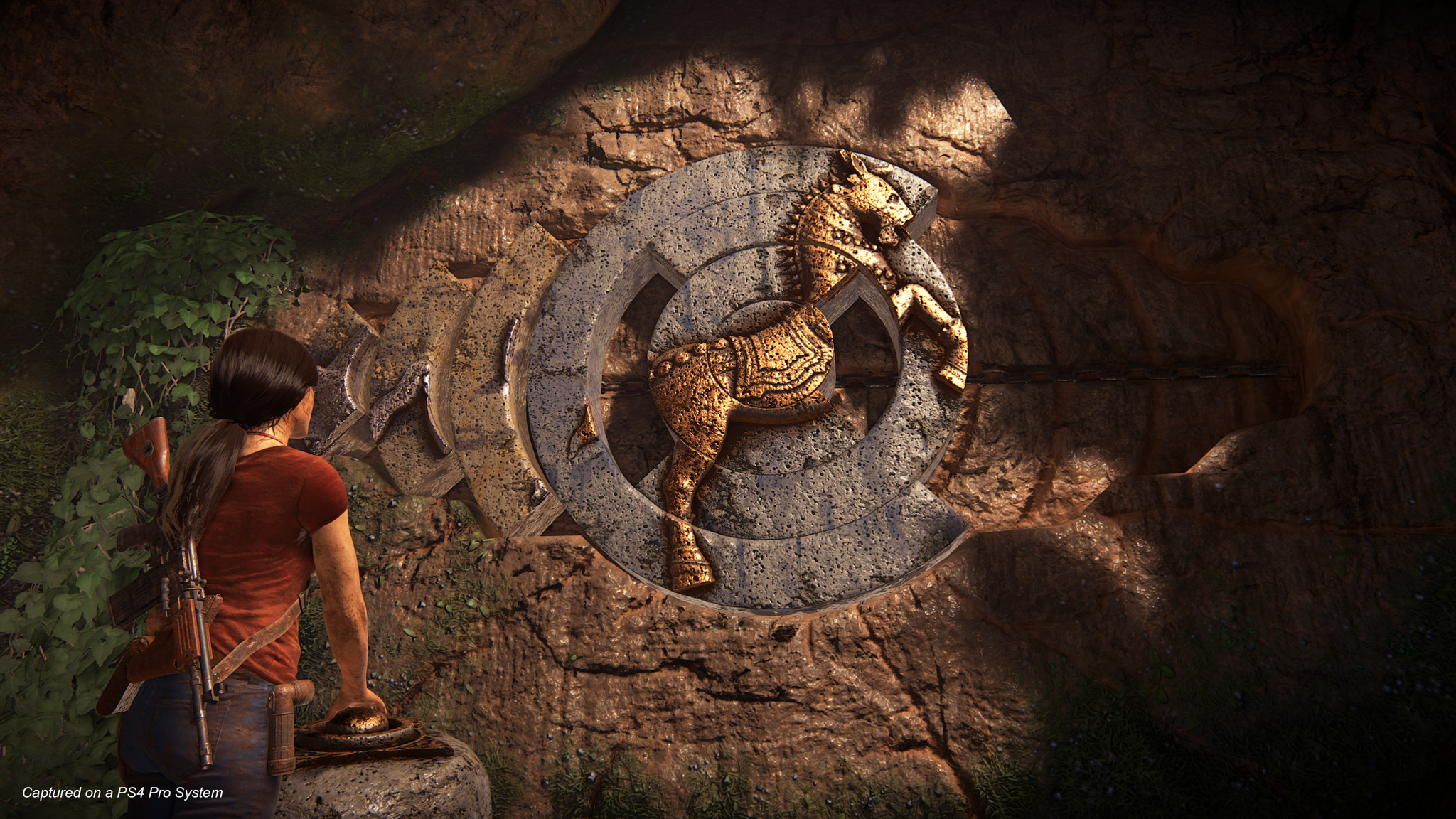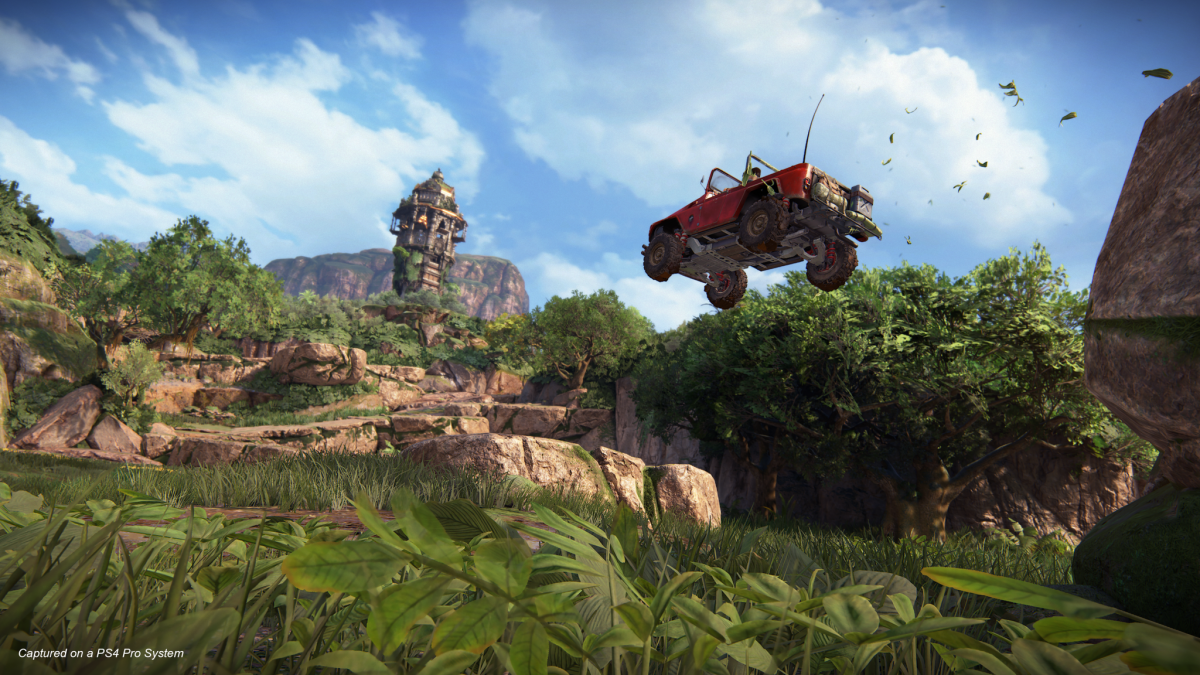
Who didn't want to be Indiana Jones? For decades, the trope of cavalier archaeologist in exotic locales has captured the imagination of many, including today's top game designers. There are dozens of games about bulletproof adventurers filching golden idols between shootouts and parkour sequences. Within that genre, though, the Uncharted series is king. It's sold more than 30 million copies worldwide across four different games, largely on the strength of its hero, Nathan Drake.
Unlike Indiana Jones, Drake knows how to bow out gracefully. Uncharted 4: A Thief's End was exactly that, Drake's final game, and one of the best released in 2016. The series will live on without him, though. The upcoming Uncharted: The Lost Legacy seeks to tick all the boxes fans expect from the critically acclaimed series, but replaces the charismatic Drake with Chloe Frazer, a supporting character featured in Uncharted 2: Among Thieves.
"Chloe is still a fan favorite but didn't get the opportunity to shine in previous games," lead designer James Cooper told Newsweek. "This was like we're giving her a whole new chapter of her own to go into all that and leave the legacy of Drake alone."
During a 45-minute demo, I spoke with Cooper about Uncharted: The Lost Legacy and what the Naughty Dog team hopes to accomplish by introducing change to a titanic franchise. I also played a beefy hands-on as we talked, which gave me a sense of the scope, scale and mechanics at play in this new offering, set in the Western Ghats area of India. I controlled Chloe as she and her hired gun, Nadine (another familiar franchise face), searched the ruins of the Hoysala Empire for clues to the whereabouts of the Tusk of Ganesha. And while the narrative of "desperately seeking sacrosanct relic" is well worn and familiar, Cooper informed me that this particular section of the game represents a series first.
"It's actually the biggest explorable environment we've ever done in Uncharted," he said. "We're really playing into the idea of player agency, and players being able to choose their path and being given a nonlinear space to be able to explore and choose what you want to do and when you want to do it."
I found this to be half-true. While the Western Ghats area is indeed vast and richly detailed, down to the accuracy of the parrots in the trees, the ludonarrative dissonance that has plagued the series thus far was nevertheless in evidence. (Ludonarrative dissonance refers to the disconnect between the player's character and the character's motivations.) Throughout the franchise, Naughty Dog painted Nathan Drake as an upstanding guy, but the action-adventure body count for a video game hero could easily soar into the triple digits, rendering Drake a not-so-upstanding mass murderer.
In Uncharted: The Lost Legacy, I felt that disconnect during the exploration Cooper talked about. Chloe has limitless stamina and superhuman core strength, nimbly climbing and leaping to explore places we never could. But when confronted with a wide-open, muddy hillside, I was told a character, who moments before had performed dozens of death-defying leaps, couldn't walk up a slippery slope. I had to backtrack to find a vehicle to speed up the hillside. The same mechanic does exist in Uncharted 4, but its inclusion here defies the sense of player agency. You shouldn't have to remember there's some trick behind something as obvious as climbing a hill, especially on a mixed-terrain map designed for wandering. Despite Naughty Dog's best intentions, I quite literally tried to choose a path, and could not.
"We have to give a sense of purpose to the car. As well as being a cool way to get around, it can traverse things that the player can't, so it has these abilities," Cooper explained.
My overall impression of the map itself remains optimistic. In addition to being beautiful, it is also cleverly arranged to highlight both how deep and how interconnected it is. A long sequence involving free-climbing treacherous ruins amid heavy gunfights against rival mercenaries demonstrated this. When I finished, I stood atop a peak and gazed down at the 4x4 I had parked near the entrance to the temple. I traveled so far and felt I did so much, but still ended up back at the beginning. It was a wonderful showcase of intricate design. It also made me realize I was hopelessly lost and needed a map.
"We've actually never done maps before in Uncharted, so it's a new feature for this. But because of the nature of the space, and it being this kind of nonlinear, explorable environment, we needed them," said Cooper.

Uncharted: The Lost Legacy features a number of series firsts. The map, the photos Chloe stores on her phone (it's "Chloe's take on the journal"), the big open spaces, a lock-picking mechanic and much more all add new layers to one of gaming's biggest franchises. Cooper explained that these decisions were meant to give continued momentum to the concepts behind Uncharted 4.
"We talked a lot in Uncharted 4 about the term 'wide linear': wide, linear space where we were telling a linear narrative, but opening the space to allow the player to explore more. This is a rebuilding of that, taking things much further," Cooper said.
How far is too far? For now, it seems that Uncharted: The Lost Legacy is carefully toying with a formula that has pleased fans, critics and shareholders alike. It's a risk but a necessary one, and Naughty Dog has a sterling reputation for a reason. We all wanted to be Indiana Jones until they made us want to be Nathan Drake instead. Odds are we'll all want to be Chloe Frazer soon enough.
Uncommon Knowledge
Newsweek is committed to challenging conventional wisdom and finding connections in the search for common ground.
Newsweek is committed to challenging conventional wisdom and finding connections in the search for common ground.
About the writer
To read how Newsweek uses AI as a newsroom tool, Click here.








